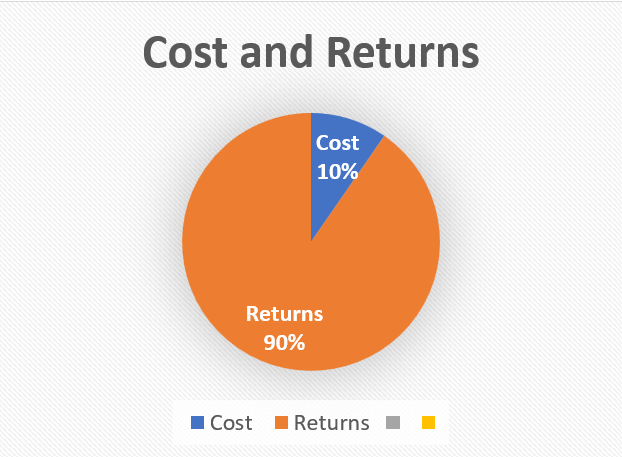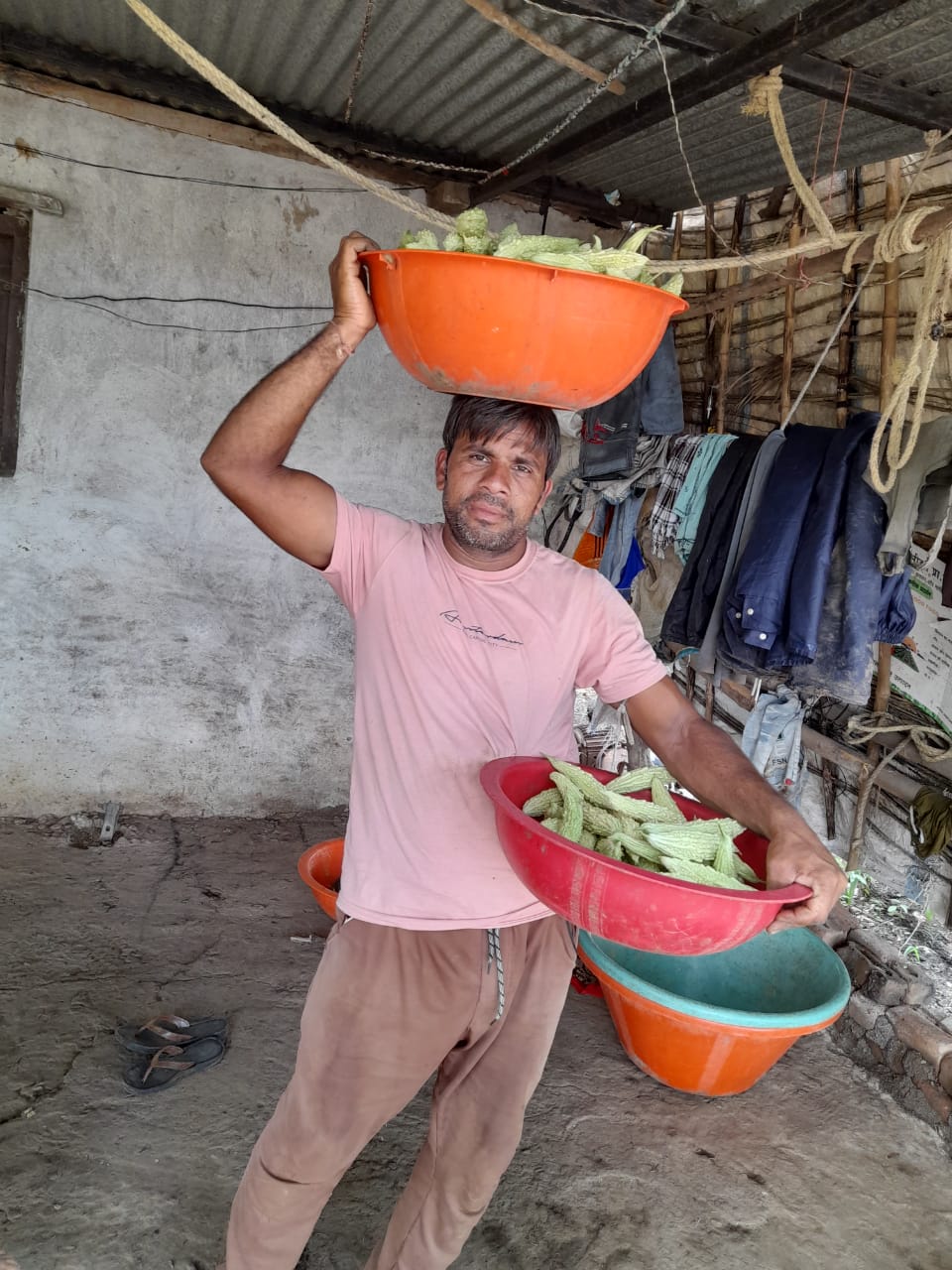Simple Innovations for Successful Vegetable Production in Ghana
Written with support from Ramid Pugbera Saana, Technical Field Officer, EWS-KT Ghana
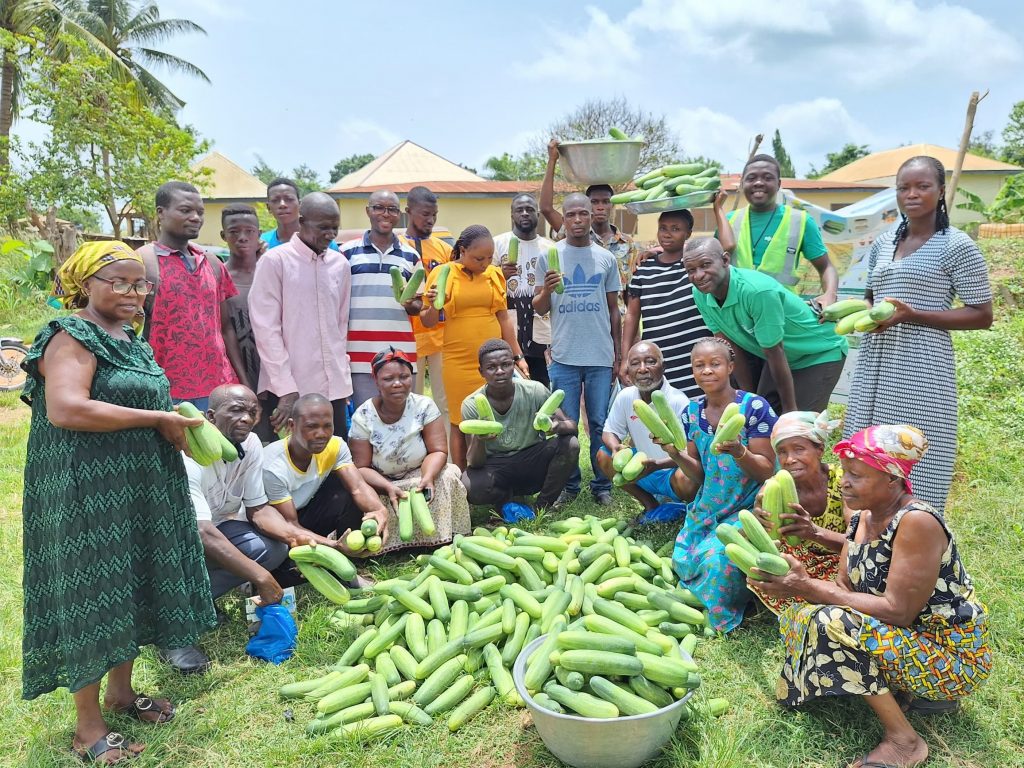
BONO REGION, GHANA – The goal of farming is to obtain the desired harvest, so as to improve the livelihood of the farmer. However, smallholder farmers are often faced with constraints that make this realization nearly impossible. Lack of the necessary skills and unfamiliarity with simple innovations for better production are major contributing factors.
In November 2023, with support from the Embassy of the Kingdom of the Netherlands in Accra, East-West Seed Knowledge Transfer Foundation began working directly with farmers in the Bono region of Ghana, providing training in simple but effective innovations in vegetable farming. The Bono region is one of the country’s largest producers of food, with tomato, pepper, eggplant, and okra among the major vegetable crops. However, challenges remain.
“Drought is one of the major challenges in our community,” explained Joseph Ohene Benjamin, a vegetable farmer in Senase, a suburb of Berekum East district. “Lack of water keeps farmers from producing vegetables during the dry season, despite the presence of large areas of arable land.”
A farmer of okra, yam, plantain, and maize for 10 years, Joseph has been receiving guidance from EWS-KT Technical Field Officer Ramid Pugbera Saana to improve his farming skills. As a key farmer under the Transforming Vegetable Farming as a Business project, Joseph set aside part of his field as a demonstration plot in which to practice new farming methods, and neighboring farmers regularly gathered at the demo plot to participate in group training sessions.
Learning with EWS-KT
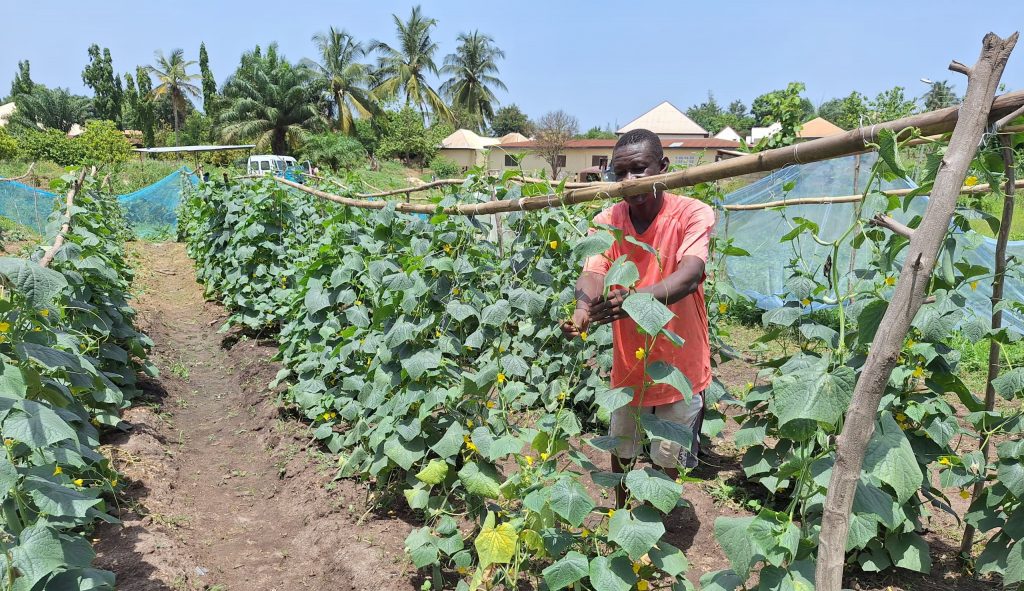
One of the first training sessions that Ramid held at Joseph’s farm was on choosing a crop and variety, taking into consideration the local area and the market demands.
“I settled on cucumber,” Joseph said, “which is one of the scarcest and yet most in-demand exotic vegetables in the Berekum market. The production of this vegetable is not known to the majority of farmers in my community here. But by following the production protocols and with the assistance from Ramid, I have been able to produce healthy and nutritious vegetables to feed my family and to sell in the market. Though I faced challenges, those challenges became lessons.”
Joseph learned how to build raised beds (20 centimeters high and 1 meter wide), which loosened the soil for proper root development, and to space his cucumber plants the right distance apart for better plant growth, easier pest management, and higher yields.
Not surprisingly, one challenge Joseph encountered was a limited supply of water for irrigation. Ramid demonstrated how covering the beds with rice straw conserves moisture, while also suppressing weed growth.
Another challenge was supporting the cucumber vines in an upright position, as fruits that lie on the ground are more susceptible to pests and rot. During training sessions at Joseph’s demonstration plot, Ramid showed participants how to use rope and available branches to set up trellising, setting the stage for a high-quality cucumber harvest.
Other techniques practiced at the training sessions and in individual meetings with Joseph included seedling production using leaf pots, proper fertilization application, and integrated pest management, including responsible use of pesticides when necessary.
“The harvest obtained from my cucumber demonstration plot has proven to my fellow farmers and myself that indeed vegetable farming is profitable, and with a little attention and dedication, farmers can obtain the best harvest from the little space available to them,” said Joseph.
Field Day at Joseph’s Farm
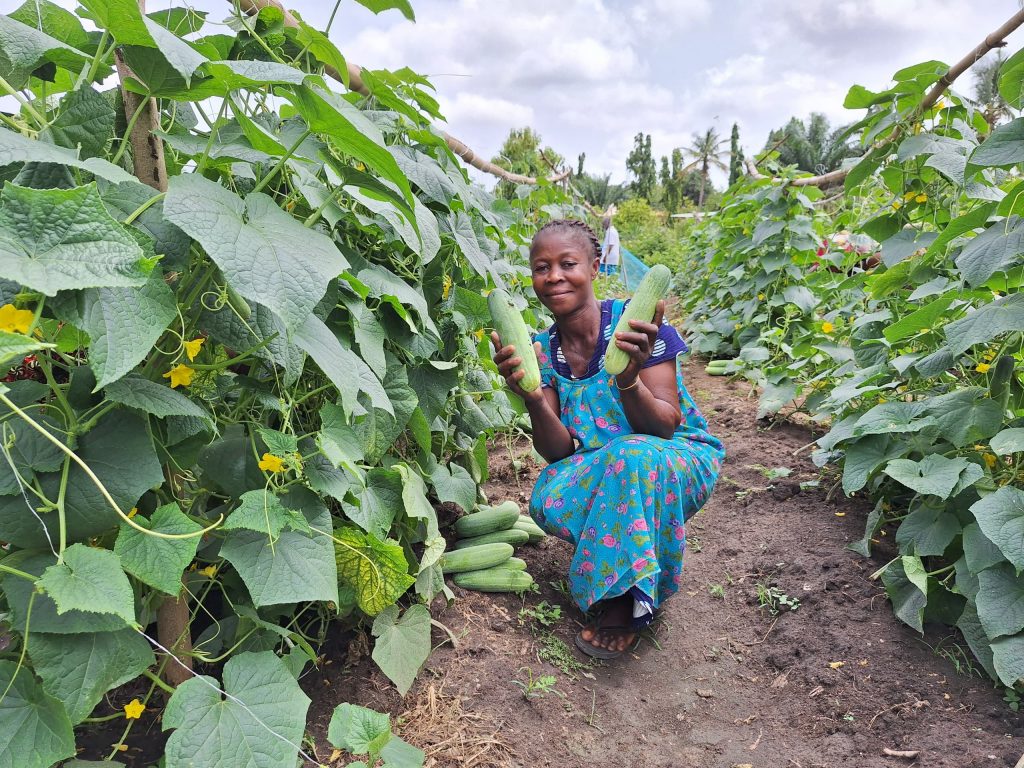
Joseph celebrated his demonstration plot’s fourth harvest with a Field Day at his farm in early April. Neighboring farmers and other interested community members came to see his abundant yield and to help pick the cucumbers. Together, they harvested more than 600!
Two of the people attending the Field Day were vegetable sellers from the Berekum central market. Impressed with the high quality of Joseph’s cucumbers, they bought all of his harvest, right at the Field Day. Joseph’s decision to plant cucumber using improved farming techniques turned out to be an excellent business decision.
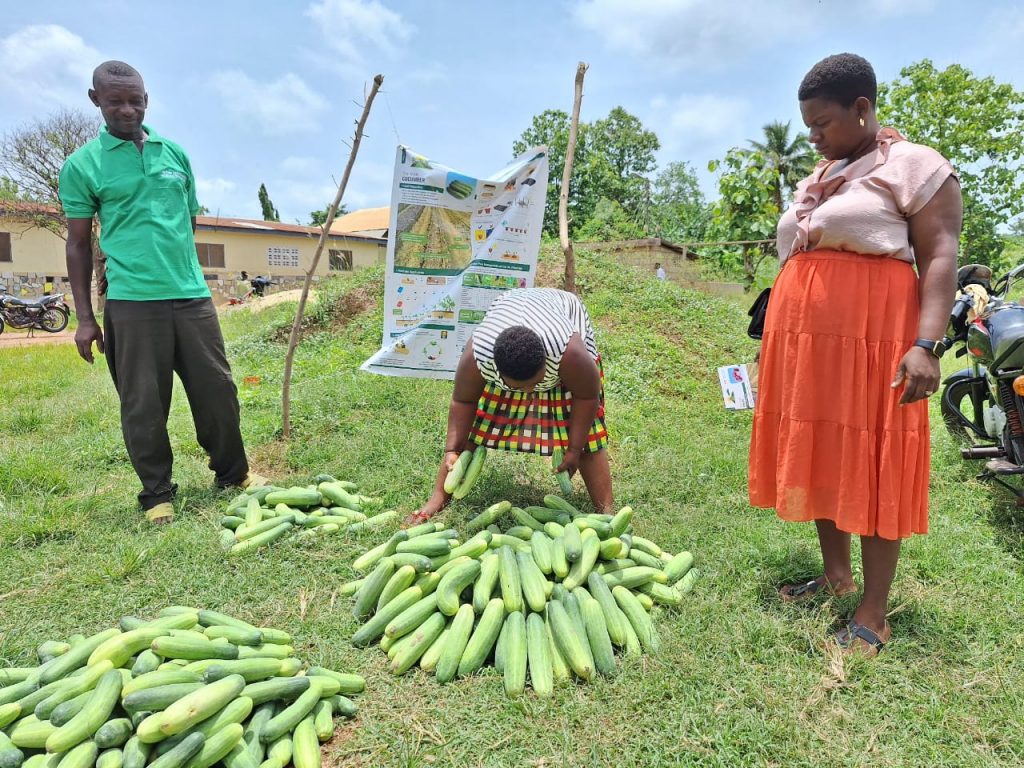
Demonstration Plot Details
Presented below are the production and harvest analysis for Joseph’s cucumber demonstration plot.
Table 1: Production Specifications
| Activity | Description |
| Production Type | Open field |
| Land Size | 250 square meters |
| Crop (Variety) | Cucumber (Nandini) |
| Plant Population | 500 plants |
| Planting Spacing | 50cm by 60cm |
Table 2: Production Costs (Inputs and Seeds)
| Category | Product | Quantity Used | Total Cost (Ghanaian Cedis) |
| Seeds | Cucumber | 20g | 90 |
| Fertilizers | NPK 15:15:15 | 5kg | 42 |
| Urea | 5kg | 46 | |
| MOP | 2.5kg | 48 | |
| Pesticides (for whiteflies and beetles) | Abamectin | 30ml | 1.8 |
| Lambda Cyhalothrin | 30ml | 2.7 | |
| Supplies | Trellising rope | 2 bundles | 50 |
| Total | 280.5 |
Table 3: Harvest Analysis
| Harvest | Quantity (Pieces) | Total Income (Ghanaian Cedis) |
| First Harvest | 17 | 20 |
| Second Harvest | 117 | 110 |
| Third Harvest | 172 | 340 |
| Fourth Harvest (Field Day!) | 640 | 1,150 |
| Fifth Harvest | 108 | 430 |
| Sixth Harvest | 145 | 580 |
| Total | 2,630 | |
Figure 1: Cost/Benefit Analysis
